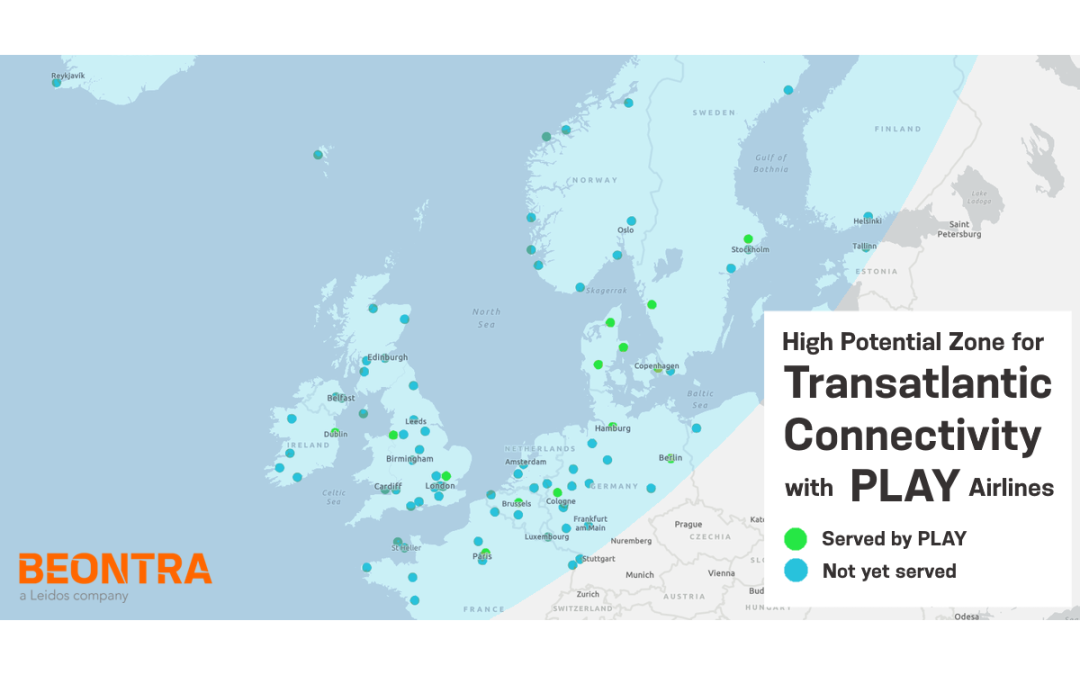The unique location of its hub Keflavik Airport enables the Icelandic startup PLAY Airlines to connect Europe and North America with its A320 neo fleet. The recent announcements of many new PLAY routes have inspired us to take a closer look at PLAY’s hub schedule – we wanted to discover which European airports are in a geographical position to allow for transatlantic connectivity via Keflavik.
We therefore analysed the bank structure at PLAY’s hub in Keflavik. PLAY Airlines serves New York’s Stewart International Airport and four additional markets on the east coast of North America on a daily basis. During summer, transatlantic flights arrive at KEF between 04.20 AM and 5.00 AM and depart between 02.50 PM and 3.30 PM. The below illustration shows how the time window for a flight rotation between KEF and other European airports has been determined, considering a minimum connecting time of 45 minutes.

In order to connect from and to North America, a rotation must not leave KEF before 05.45 AM and must arrive back no later than 02.05 PM. This time window of eight hours and 20 minutes allows PLAY to reach European airports in a range of approximately 2,500 kilometers, which is the area we have marked in the map as the “high potential zone” (please refer to header image).
Airports in the high potential zone have the advantage that PLAY can establish a rotation between these airports and KEF on the same day. For example, KEF – BER (2,400 km) is currently the longest already served route in the high potential zone. As we can see from the below illustration, the flight schedule gives passengers the opportunity to connect from and to North America both ways.

Nonetheless, PLAY also serves routes outside the high potential zone. For example, KEF – PRG (2,700 km) is also served with a rotation on the same day. However, this rotation does not provide connectivity to the transatlantic destinations, unless travelers combine the trip with a stay in Iceland.
There are even significantly longer PLAY routes, such as KEF – ATH. However, due to the stage length of 4,200 kilometres, the plane arriving in Athens in the afternoon does not head back to KEF before the next day. This flight schedule has the advantage that it again provides transatlantic connectivity. On the other hand, the long ground time at ATH decreases aircraft utilization compared to shorter routes.
Those examples illustrate that airports in a 2,500 km radius from KEF have the highest potential to benefit from PLAY’s North American network.
Of course, geographic location alone does not make for a successful route launch. Airports using BEONTRA’s Route Forecasting solution can assess market size, yield, connectivity and more to determine the potential of a new route and to build an airline business case.
Find out more at www.beontra.com/solutions.

